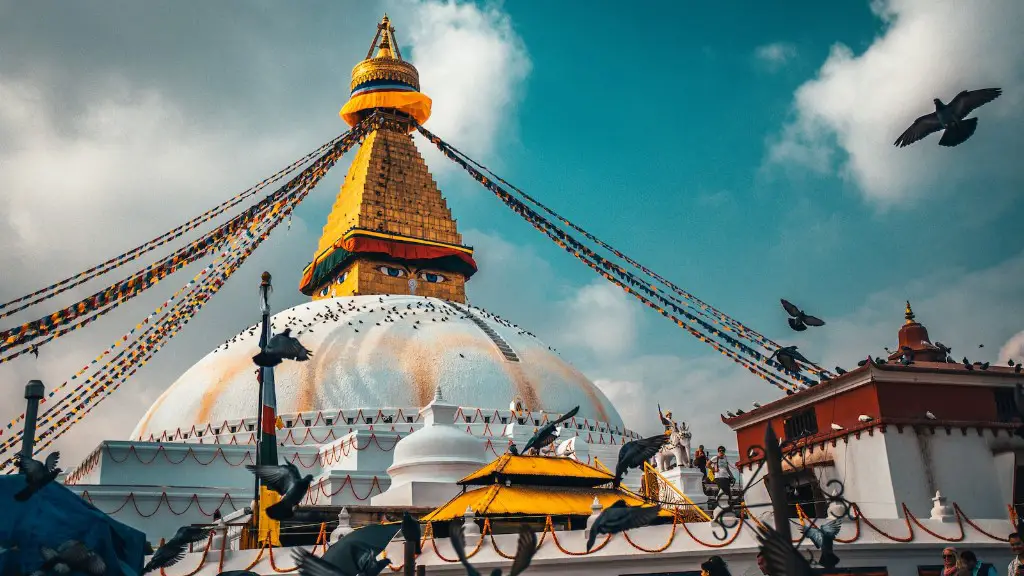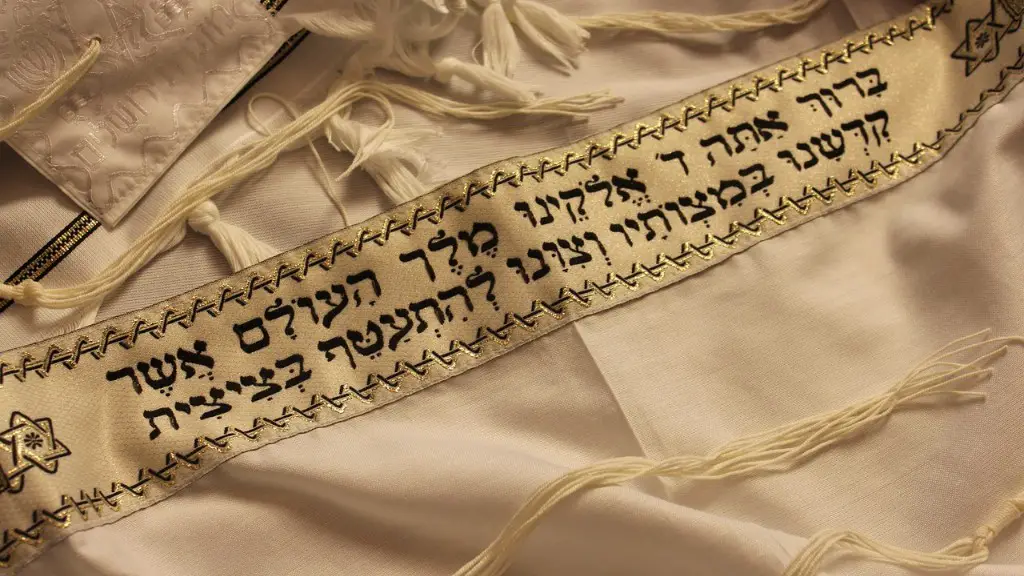Norse Paganism is believed to date back more than a thousand years, predating Christianity in the region by several centuries. It played a vital role in the culture of many northern and eastern European cultures, and had a variety of gods and goddesses for different activities and purposes. While the classic image of Norse Pagans is one of violence and aggressiveness, the truth is that they were guided by personal mettle and courage and shared a deep bond with the outdoors.
The practice of Norse Paganism is thought to have started in the first millennium BC and been established by the 8th century. The religion was made up of polytheistic beliefs, which recognized a variety of gods and goddesses. Odin was the chief of the gods, and other gods included Thor, Loki, Freyr, and Freyja. These gods and goddesses were thought to have distinct personalities and attributes, and followers of Norse Paganism sought to fulfill their desires by conducting special rituals and offerings.
The practice of Norse Paganism was very widespread in northern and eastern Europe, the Viking Age and parts of the British Isles. It was the dominant religion until it started to be replaced by Christianity in the tenth century. Vikings and other Scandinavians believed in an afterlife in either Valhalla or Helheim, and death was not seen as the end but rather a transition to a different way of being. Vikings and other Norse peoples traveled and conquered large parts of Europe and beyond, spreading Norse Paganism along with their culture.
In comparison, it is widely accepted that Christianity began in the Roman Empire in the first century AD, introduced through Jesus Christ and his teachings. Christianity spread quickly to other parts of Europe and beyond, and supplanted Norse Paganism in many areas by the thirteenth century. However, many of the characteristics of Norse Paganism survived in the culture and folklore of northern and eastern Europe, including the worship of nature, ancestor worship, and the veneration of heroes.
Though Norse Paganism has been largely replaced by Christianity today, it still has a strong following in some countries. Countries like Iceland and Norway have kept some of the traditional practices and beliefs alive in modern times, thanks in part to a revival of interest in the religion in recent decades. Those who still practice Norse Paganism today have a deep sense of connection to the culture, believing in a respect for nature and honoring their ancestors and those who have come before them.
Rituals and Practices of Norse Paganism
Norse Paganism focused heavily on rituals and practices involved in worshiping the gods. These rituals were practiced in order to bring blessings and gifts from the gods, and also to thank them for their protection. Rituals and ceremonies were designed to create a stronger connection between the gods and mortals, and offerings of food and livestock were sometimes made to please the gods.
Rituals were also important for forging connections with the spiritual world and for communicating with the gods. Practices such as animal sacrifice, divination, and consultation of runes were used to gain insight into the future, as well as for protection from evil forces. Furthermore, Norse Pagans believed in honor and courage, a virtue demonstrated through their raids, exploration, and interactions with other cultures.
In addition to rituals and practices, Norse Paganism also included certain symbols and signs which had specific meanings. For example, the Hammer of Thor was believed to be a powerful symbol that could protect the bearer from evil forces. The Valknut or Valkur, a symbol of Odin, was believed to represent the cycles of life, death, and rebirth. Other symbols that are still used today include the Yggdrasil, a symbol of strength and resilience, and the Gungnir, a symbol of Odin’s authority.
Differences between Norse Paganism and Christianity
Norse Paganism and Christianity have many differences when it comes to beliefs, practices and symbols. Unlike Christianity, Norse Paganism did not have one single set of rules or beliefs, as different tribes and communities had their own set of gods and goddesses and ways of worshiping them. Furthermore, Norse Paganism was a polytheistic religion and believed in many gods and goddesses, whereas Christianity was and is a monotheistic religion that believes in only one God.
In addition, there are different concepts in Norse Paganism and Christianity when it comes to death and the afterlife. While both see death as part of a transition, Norse Pagans believe in two afterlives “Valhalla” and “Helheim.”, while Christianity believed in only one, a heaven or a hell. Furthermore, Norse Pagans believed in the power of fate, while in Christianity fate is seen as a matter of free will.
In Norse Paganism, rituals and practices were focused on forging a connection with the gods, whereas in Christianity, rituals and practices were focused on connecting with God, seen as all-powerful. Christianity also has a much stronger emphasis on faith and beliefs compared to Norse Paganism, which was more focused on day-to-day activities and practices.
Modern Interpretations of Norse Paganism
In the past few decades, there has been a resurgence of interest in the Norse Pagan faith, with many adopting it in some form or other. This reinterpretation of Norse Paganism has many similarities to the original faith, but with some unique features of its own. This modern version of Norse Paganism emphasizes respect for nature and honing supernatural powers of communication with the gods, as well as a renewed emphasis on the warrior spirit. Modern practicers of the faith tend to incorporate contemporary political and social issues into their practices.
There are several organizations that provide resources for those wanting to learn about and practice Norse Paganism. Additionally, there are gatherings and festivals which bring together practitioners of the faith from all over the world to discuss and celebrate their beliefs and culture. This is a reflection of how Norse Paganism continues to live on in modern times, as both a practice and a source of inspiration for people of different backgrounds.
Role of Norse Paganism in Popular Culture
Norse Paganism has been featured prominently in popular culture, reflecting its influence on the modern world. The Marvel Cinematic Universe, for example, features several characters inspired by Norse Pagan deities. Thor is the god of thunder, while Loki is the trickster god, and Odin is the chief of the gods. In recent years, the religion has been given greater exposure through television shows such as the show Vikings, which follows the adventures of a Norse warrior in the Viking Age.
Norse Paganism has also had a major influence on fantasy in books, movies, and video games. Characters like Gandalf the wizard from The Lord of the Rings and the Grey Wardens from the game Dragon Age owe a lot to Norse Paganism in their abilities, aesthetics, and special abilities. Even more recently, the video game series God of War saw a main character, Kratos, inspired by a Norse god, who embarks on an action-packed quest of redemption and vengeance.
Legacy of Norse Paganism
Though Norse Paganism has been largely replaced by Christianity over the centuries, some of the features of Norse Paganism live on in popular culture today. From the movie games, to the admiration for nature in modern culture, it is clear that Norse Paganism has left a lasting impression on today’s world.
At its core, Norse Paganism was a religion built on respect for nature, courage, and honor. Those who still practice the religion today embrace these values and seek to pass them down to the next generation, ensuring the legacy of Norse Paganism continues to live on for many years to come.

